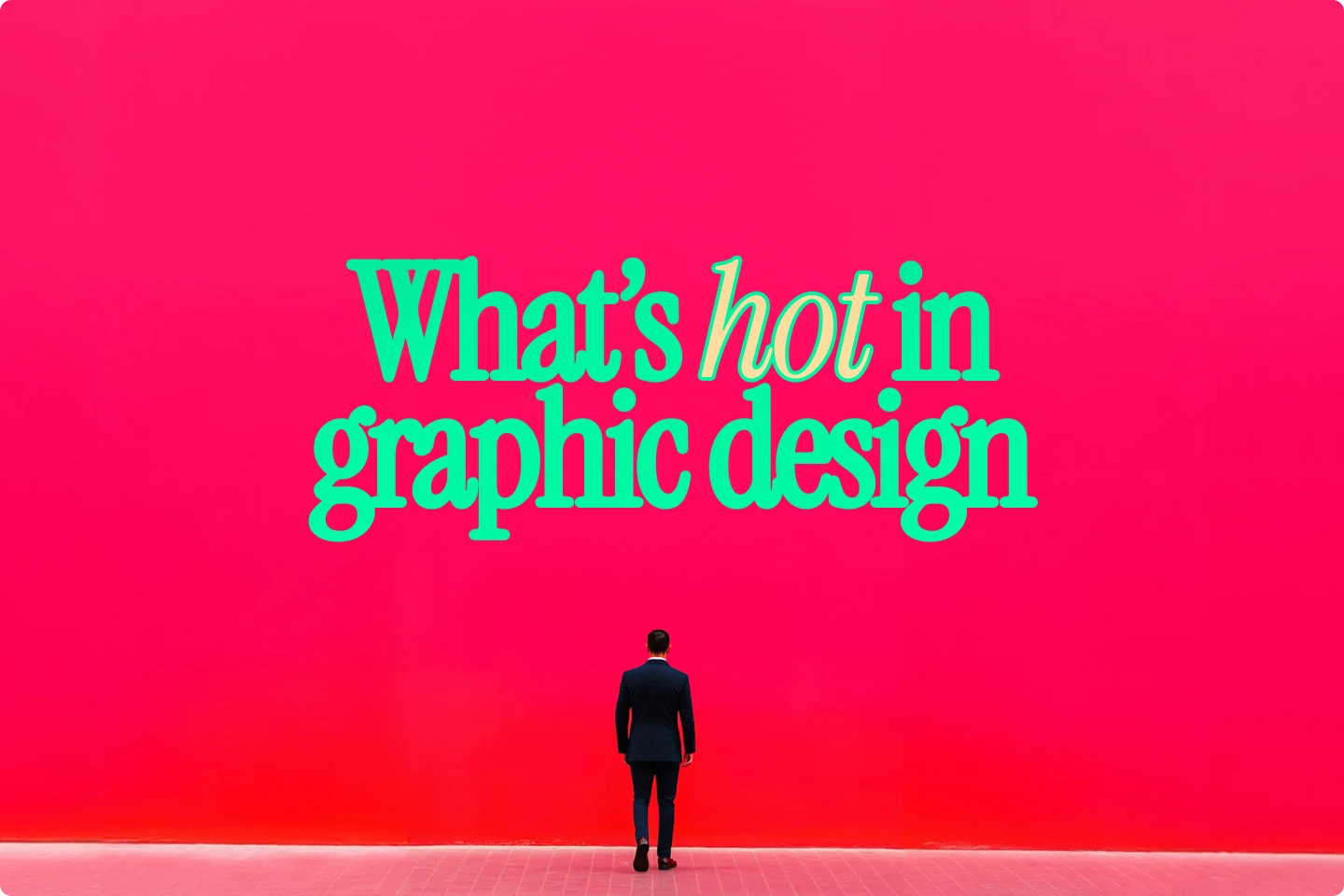5 practical tips to improve your visual storytelling


To tell a memorable and lasting story, sometimes words aren't enough. If you struggle with visual storytelling, these insights can help.
Imagine you are about to give one of the biggest presentations of your life to the directors of your company. You made a plan for the presentation, and you studied everything. You feel confident that they will love what you have to say and your idea will change the company.
You pitch your masterful plan to the directors and lay out your thoughts on what the team should do next. You think you crushed it, but you realize their faces aren't showing the enthusiasm you expected to see.
Suddenly, your boss clears their throat and says with a hint of skepticism, "Great presentation, but where are the visuals?"
Maybe this type of scenario never occurred to you, but it's quite possible you were once in a situation where your project lacked the visual punch to drive home its message.
Unless you're writing novels or speeches, a good story almost always has great visuals. In fact, just as much as words, images are not just an important part of delivering a lasting message, it's an absolutely crucial part.
The power of visual storytelling is nothing new, but there are still plenty of creatives who don't know how visual storytelling works (don't worry if you're one of these people - we've all been there).
That's why we made this post, so you can explore practical tips to improve your visual storytelling. Whether content marketing strategy or even making a picture book, you'll walk away with actionable insights into the art of using images to drive emotions and bring your ideas to life.
What is visual storytelling?
Ever since the time of cave paintings, visual storytelling has been a powerful way to convey messages and connect with your audience on a deeper level. It involves using visual elements like images, videos, and graphics to tell a story.
In other words, it's all about conveying a narrative through visual design.
But while visual storytelling is nearly as old as humanity itself, today's digital world is dominated by screens spitting content at us 24/7. And much of this storytelling is made with AI. Even brands are turning to AI for their storytelling purposes.
This constant stream of content is one of the reasons that quality visual storytelling is now one of the most important skills to have if you want to capture your audience's attention.
Best practices for visual storytelling
Now that you know images are a key part to a narrative that lives in your viewer's mind, here are some straightforward tips you can use to start using today.
1. Make sure you know your audience
Creating a visual narrative without knowing your audience can be like throwing darts in the dark. You may hit your target, but chances are you will miss it completely.
While there are cases that your audience finds you, much of the time you'll need to knuckle down and do some classic market research to find out who your audience is.
.webp)
Starting off with the basics, you'll want to get the basic information like age, gender, location, education level, and interests.
Of course, knowing your audience means different things depending on the story you're telling. If you're writing children's books, you might not need to do an intensive deep dive compared to if you are making a presentation for a Fortune 500 company.
Now, if you are trying to get a deep look at who you'll be telling your visual story to, here are some classic techniques to learn more about your target viewers:
- Conduct User Interviews: Have one-on-one conversations with your target audience to dive deep into their needs, preferences, and pain points.
- Create Surveys and Polls: Use tools like Google Forms or Typeform to gather quantitative data on what your audience likes, dislikes, and what catches their eye in visual content.
- Engage in Online Communities: Participate in forums, Facebook groups, or Reddit threads where your audience hangs out. Observe the discussions, and engage with them to understand their views.
Understanding your audience lets you create visual narratives that are engaging and effective and let's you tailor your storytelling to their preferences.
2. Make sure to find a balance
Strategically using your visual elements like is another key to successful visual storytelling. Whether you're using free stock photos, illustrations, or 3D assets, you'll want to know when and where to use them.
So, instead of jamming images onto a blank canvas and hoping it conveys your point, you'll want to to try and find a balance to your visuals.

Finding this is crucial whether it's social media posts, blog posts, or any other real-life marketing efforts. That means you should try to avoid cluttering your visuals with too many elements, which can overwhelm your audience.
On top of creating harmony and balance with your visuals, you should focus on consistency. Ensure that your visual elements align with your brand voice and overall design aesthetic.
It can look chaotic or just plane weird if you use different creative styles for images throughout your project.
By staying consistent with your visuals, you'll create a cohesive experience for your audience and reinforces your message.
3. Let AI be your visual assistant
Using AI in your creative process is like having a super-smart assistant who’s always ready to help—minus the need for coffee breaks. Whether it’s generating ideas, automating tasks, or even fine-tuning your designs, AI tools can take a lot off your plate, leaving you with more time to focus on the finer details of the story you want to tell.

Imagine you’re stuck in a design rut for your visual narrative—AI tools can step in with fresh suggestions, helping you see things from a new perspective.
It’s like having a creative partner who never runs out of ideas. And when it comes to the nitty-gritty details, like resizing images or finding the perfect color palette, AI is right there, making sure everything is consistent and on-brand.
Think of it as a collaboration between your creative instincts and AI’s processing power. Together, you can create something that’s not just smart, but also deeply engaging and true to your vision.
So, let AI handle the heavy lifting, while you stay focused on crafting stories that resonate. After all, creativity is still your superpower—AI just helps you wield it more effectively..
4. Show, don’t tell
I had an high school economics teacher teach me the the principle of "show, don’t tell" and it was easy to see how powerful this advice was. What Mr. Lyons in Econ 101 said was that you can tell an entire story with minimal or no text at all. Instead of describing a concept with text, use visuals to demonstrate it.
This approach engages your audience more effectively by allowing them to see the benefits firsthand. Visuals can convey emotions, actions, and concepts in ways that text alone cannot, which will make your story more convincing and memorable.

Of course, some projects require text. Instead of stuffing long blocks of text in your project, use visuals to complement and enhance your text, not repeat it. This creates a more engaging and dynamic narrative that keeps your audience interested.
Showing rather than telling engages your audience more effectively and allows them to see the benefits of your message firsthand.
5. Plan your visual content from the start
Whether it's for packaging design, social media, or any other marketing plan, planning your visual content early in the content creation process is like setting the stage for a seamless performance. Planning from the start is essential for cohesive visual storytelling, and trust me, your future self will thank you for it.
By thinking about visuals from the get-go, you ensure that your visual and textual elements are like peanut butter and jelly—perfectly complementary. This way, they work together to tell your story in a way that’s both engaging and visually appealing.

As you plan your visual content, keep your story in mind. How can visuals add that extra punch? Whether it’s images, videos, infographics, or some snazzy interactive features, plan how these elements will dance together to create a cohesive narrative.
Getting your visuals in place early also lets you be more strategic. You can make sure everything aligns with your brand voice and design aesthetic, crafting a consistent and cohesive experience that hits all the right notes.
So, by planning your visuals early, you’re not just throwing things together—you’re creating a well-orchestrated narrative that’s in tune with your brand voice and marketing strategy. The result? A more impactful and memorable story that sticks with your audience.
Tools to help improve your visual storytelling
To elevate your visual storytelling, digital marketers and storytellers can use various tools that enhance the key elements of their narratives. These tools help create visuals that resonate with your audience and maintain a unique brand voice.
1. Lummi (stock photos, illustrations, and 3D assets)
Lummi offers a vast library of free stock photos that can significantly enhance your visual storytelling. High-quality images are crucial for making your stories more compelling and professional.
- Access a wide range of categories
- Find high-resolution images for any project
- Free for personal and commercial use, making it budget-friendly
Using Lummi ensures your visual content looks polished and engaging, helping your stories resonate more with your audience.
2. Dream Machine
Dream Machine and other AI video generators simplifies the video creation process, making it accessible to everyone. This tool is perfect for creating dynamic videos that can capture your audience’s attention and give a visual punch to your story.
- User-friendly interface with powerful features
- Templates and AI-driven enhancements
- Suitable for creating explainer videos and promotional content
With Dream Machine at your side you’re taking a simple step to boosting your storytelling techniques, and you can produce high-quality videos that convey your message effectively.
3. Figma
Figma is a collaborative design tool that is ideal for teams working on visual storytelling projects. It allows multiple users to work on the same project in real-time, ensuring consistency and efficiency.
- Real-time collaboration features
- Versatile design capabilities (vector editing, prototyping)
- Supports team coordination and consistency
Figma helps digital marketers and designers create cohesive visual narratives that align with their unique brand voice.
4. Autodraw
Autodraw combines machine learning with drawing to help even those with limited artistic skills create professional illustrations. This tool is perfect for adding custom visuals to your stories.
- Recognizes and polishes your sketches
- User-friendly and accessible
- Ideal for creating unique, high-quality illustrations quickly
Using Autodraw, you can enhance your visual storytelling with custom visuals that stand out and resonate with your audience.
5. Looka
Looka specializes in branding, helping you create a cohesive visual identity for your brand. This tool is essential for maintaining a consistent and professional look across all your visual storytelling efforts.
- AI-driven design options for logos and brand assets
- Easy-to-use interface
- Ensures consistency in your brand's visual identity
Looka helps you develop a strong, unique brand voice that can be sustained in the long term, enhancing your overall storytelling techniques.
Are you a visual storyteller?
Visual storytelling is more than just pretty pictures. Instead, using images to tell a narrative is about crafting a visual that resonates, engages, and sticks with your audience.
So go ahead, unleash your inner visual storyteller, and watch your brand's narrative come to life. Your audience is ready to be captivated. Are you ready to captivate them?
The ultimate list of AI conferences for designers in 2024




.webp)

